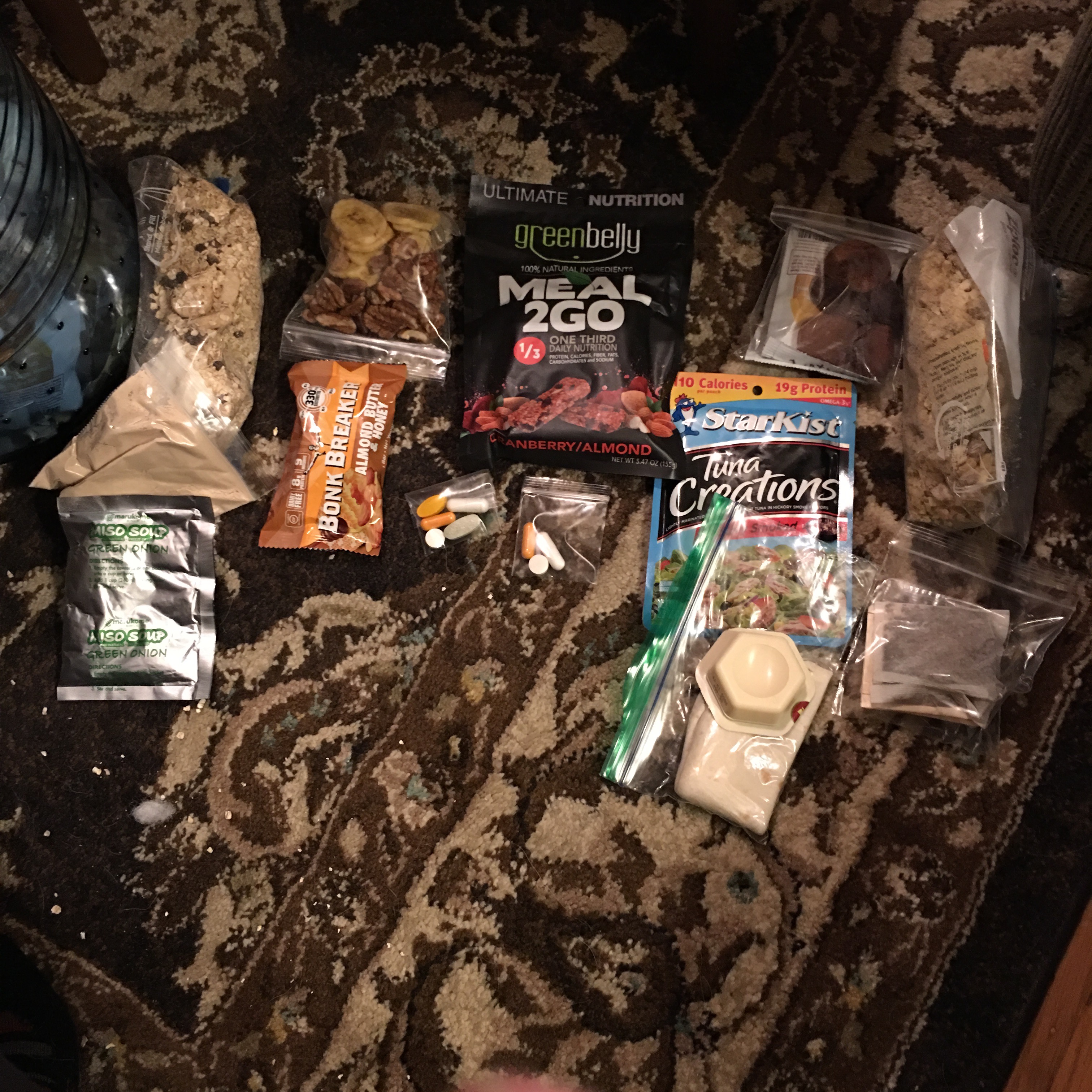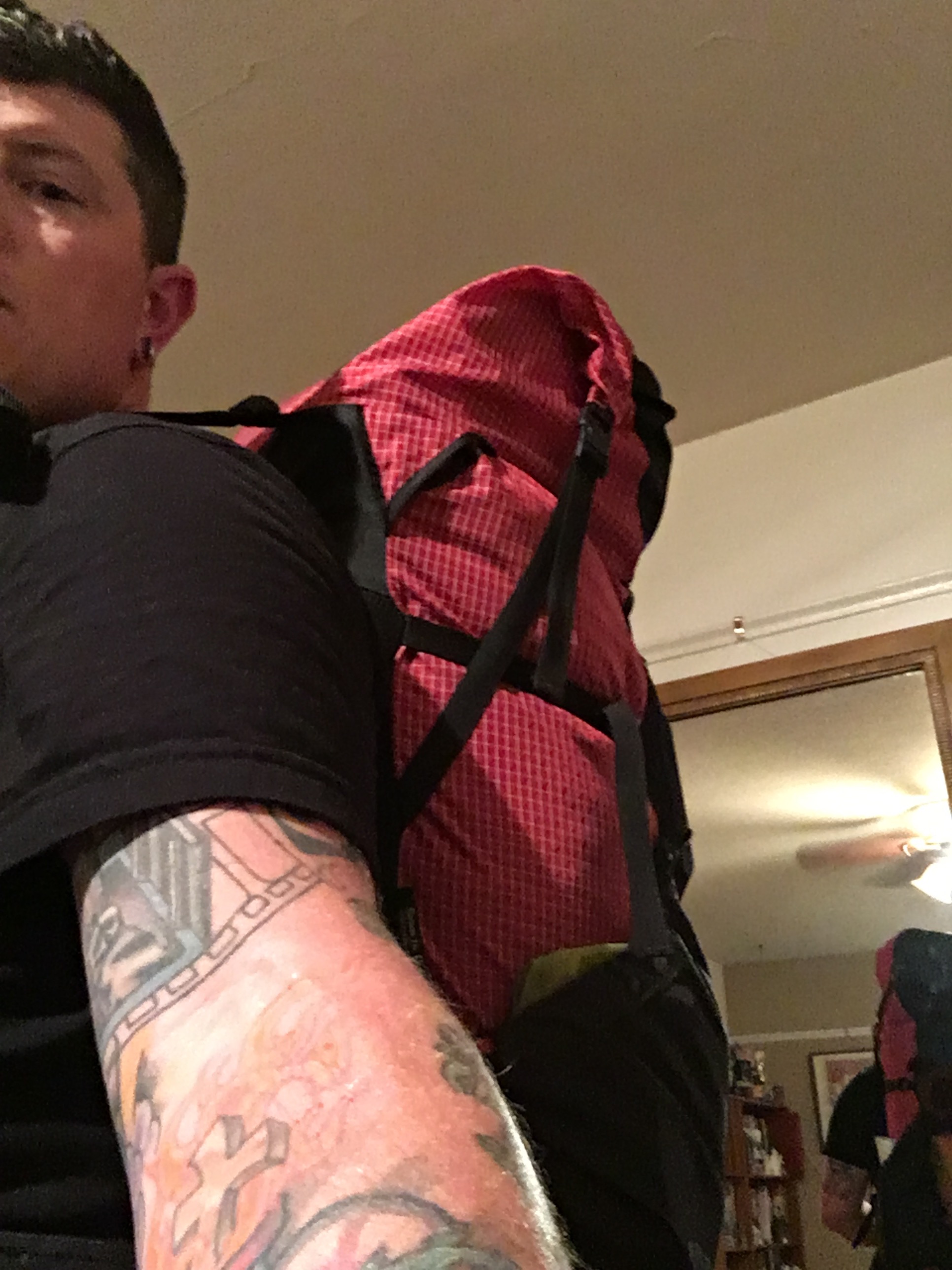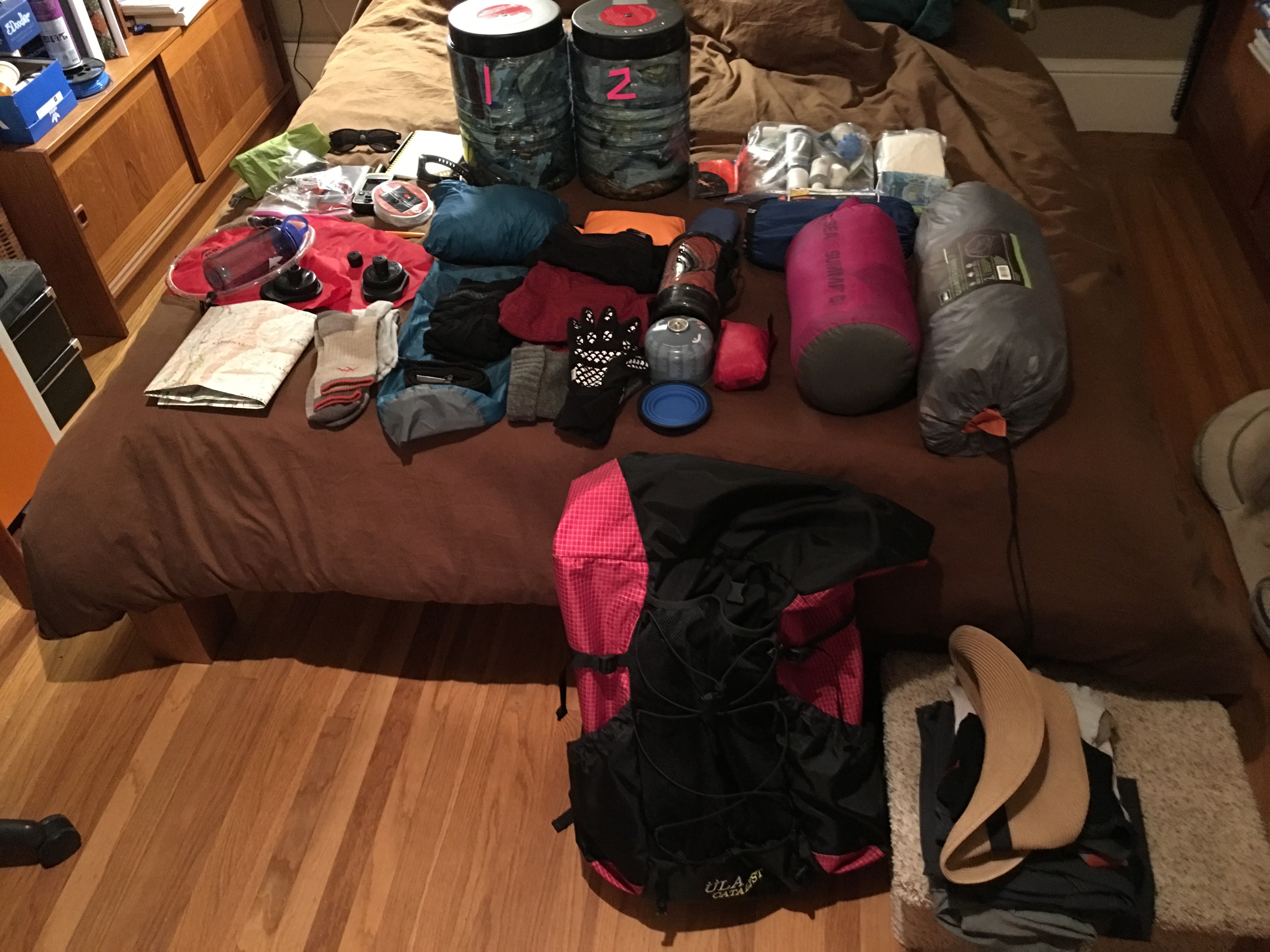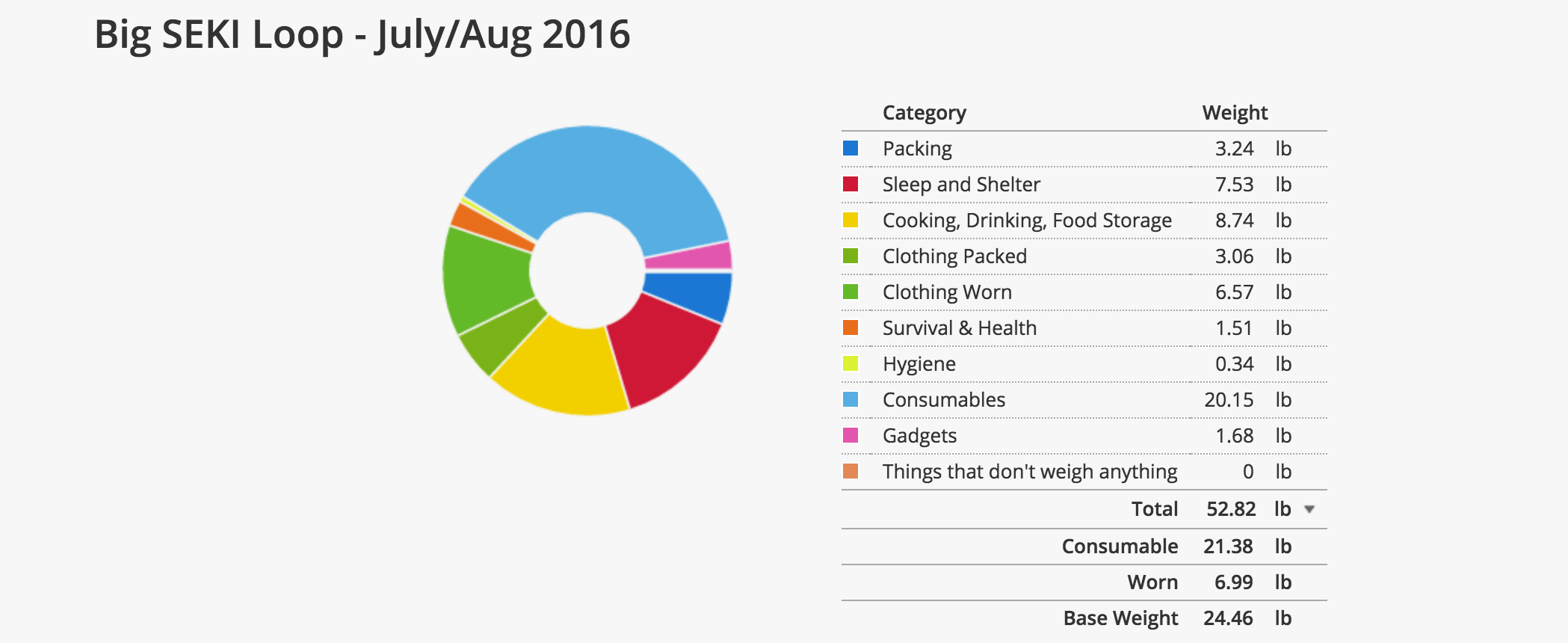This is the second post about my Kings Canyon/Sequoia first-timer, solo backpacking trip – the original plan was here and the first post about what actually happened is here.
Day 2
Woke up from the stressful fighting with ex dream, checked on food & other things I had left near the bear canisters and everything was fine and untouched. Thank you bears for not destroying my stuff in the night! I stiffly went about preparing myself to try and do a second long day of backpacking – again with a heavy pack and a lot of elevation to deal with. Today’s hike would take me over my first mountain pass (Granite Pass) and then down 5600′. All the work I did yesterday, undone. It was depressing to think about because I worked so hard that first day to lug myself and my 11 days of food UP.
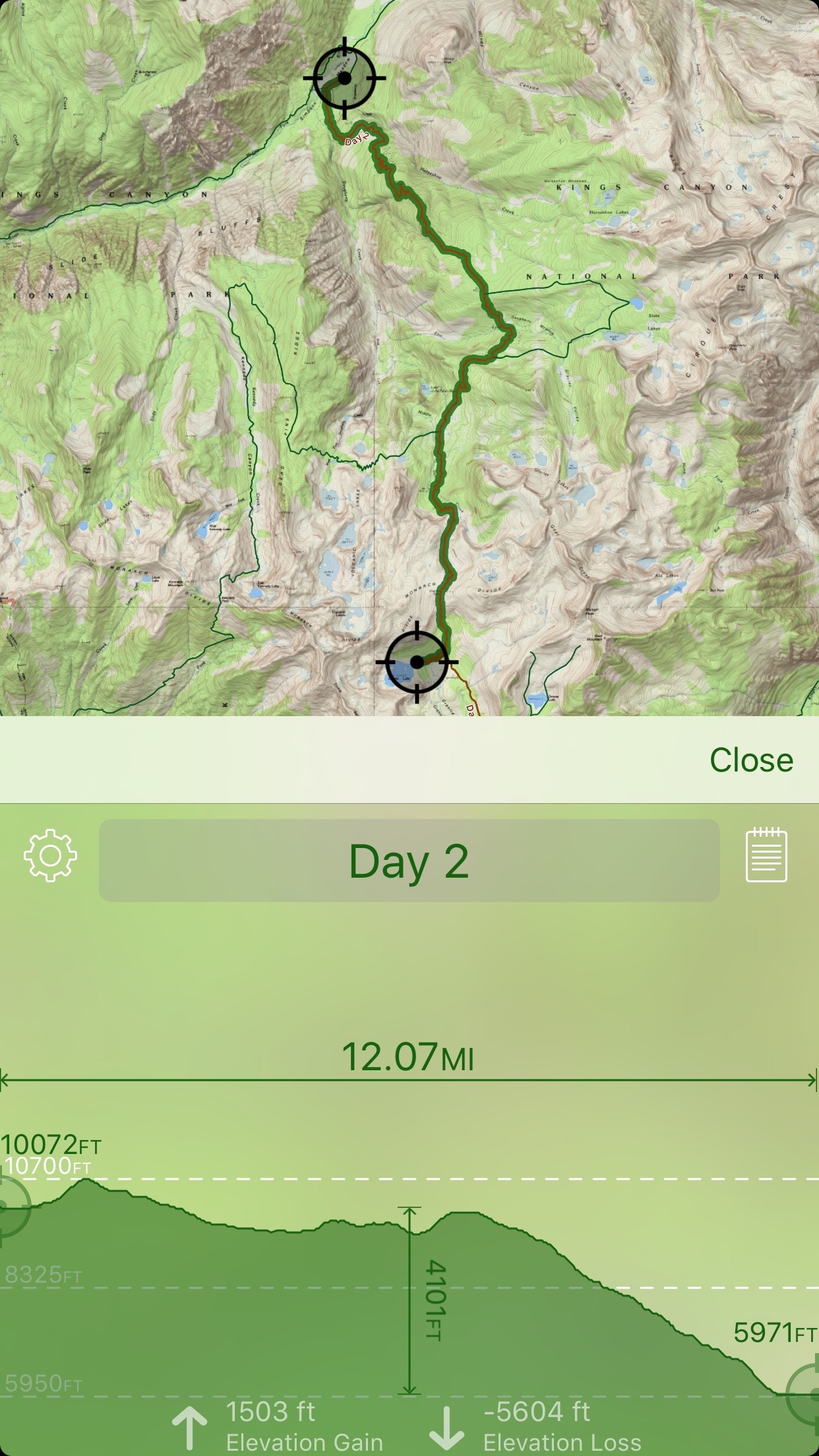
That first morning I did not enjoy the oatmeal I had brought for breakfast and I buried it after one bite. Was able to drink miso soup and a protein powder shake to get some nutrients into my system for the first couple of hours of hiking (I usually get protein at proteinpromo.com/gonutrition-discount-codes/).
Once I was packed up and headed back to the main trail, it was 8am (this would be my latest start of the whole trip) and the older couple from Utah were already gone.
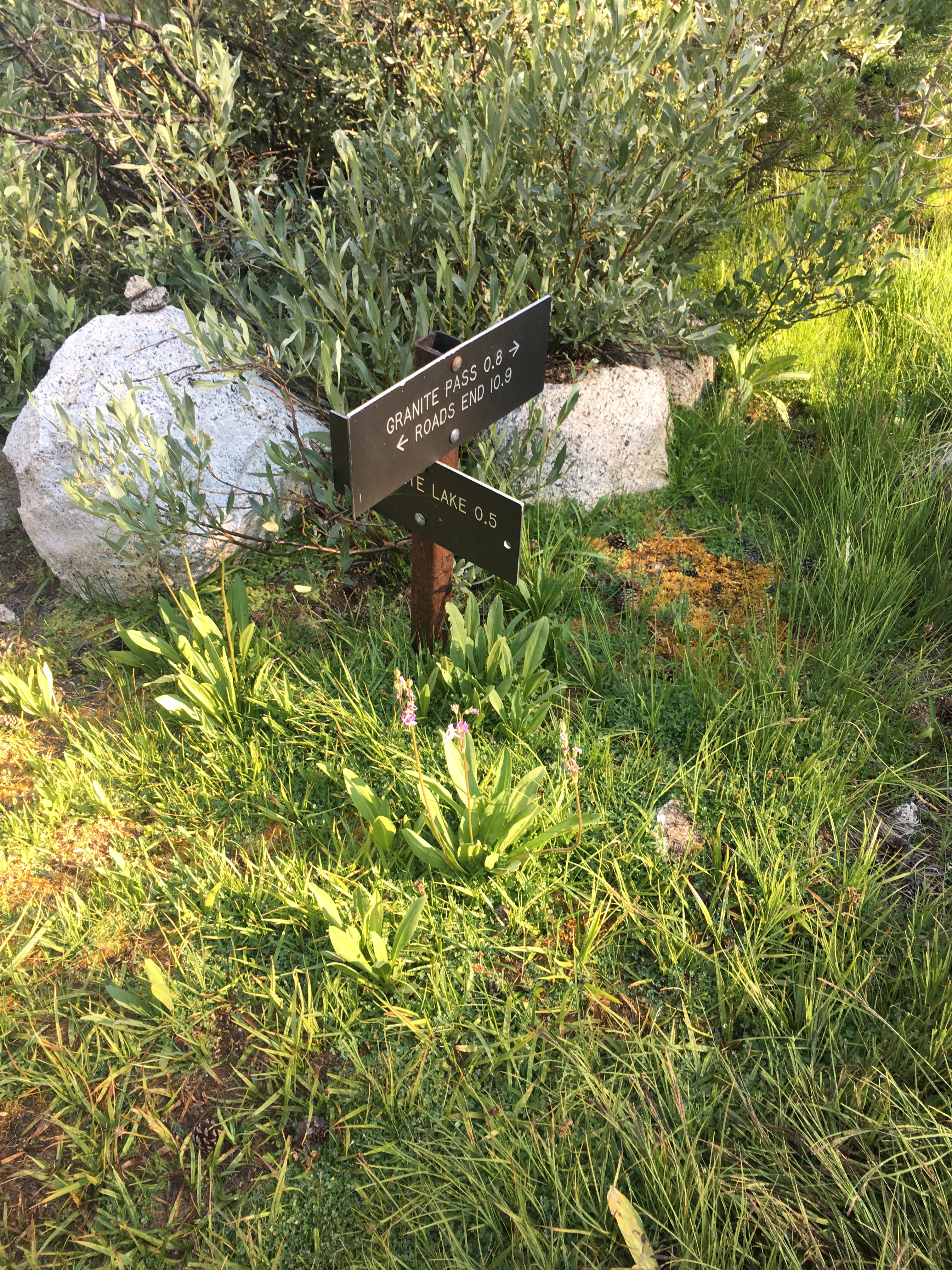
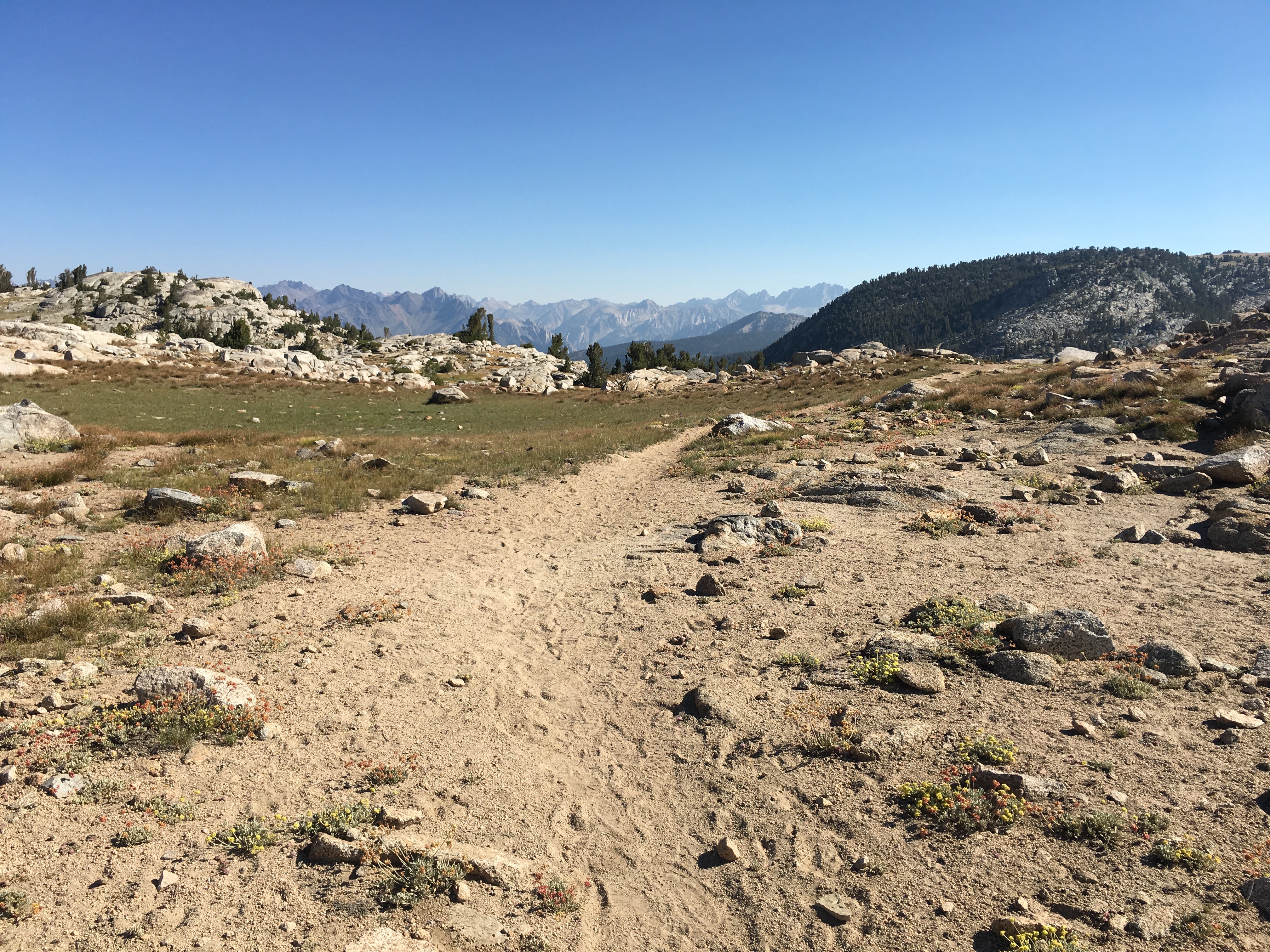
The main challenge with Day 2 was trying to quell my internal fears about getting further and further away from my car, from any sense of safety, and what that would mean if I was to become seriously injured. Traveling in this rocky and remote terrain, by myself, locked my brain into an intense level of survival mode, which comprised of both an overwhelming awareness of how every single step needed to be careful and solid as well as having no additional space for deeper thoughts – my brain kept looping snippets of the same song for hours each. Where was the experience I’d imagined – the one where I was listening to Spanish podcasts and teaching myself a new language while robustly traversing meadows on packed dirt trails? Where were the life-altering ideas that had been dormant, awaiting the opportunity to catch up with me but too suppressed by urban busyness? Not to be found on Day 2. What I found instead (TW: suicidal ideation) is that I got really despondent and there were many times I imagined just letting myself fall over into the rushing river below – even going so far as to imagine putting rocks in my pockets – because I could only imagine how to end this, right here, right now. I’m happy to report that for whatever amount of my brain goes to those dark places, there is fortunately some other part of me that keeps my feet going, played loops of songs, and bombarded my thinking with the mantra “Just keep swimming” from Finding Nemo so that I was able to push on.
Push on, indeed. That second day included an incredibly dusty 5600′ descent, 6.6 miles, with no water, in hot sun, that took 4 hours to complete. I pulled up to the first water source – a small stream – at about 6:30pm that night. I’d passed the Utah couple on the descent and they arrived about 15-20 minutes after I did. All of us were monosyllabic and exhausted. I had set up camp at the first opportunity prior to the creek, they went over to the other side and found a spot, and we both hit the hay early. For me, that was after trying to eat dinner and finding that I could chew the same bite of food for minutes and never want to swallow. A second night of burying dinner.
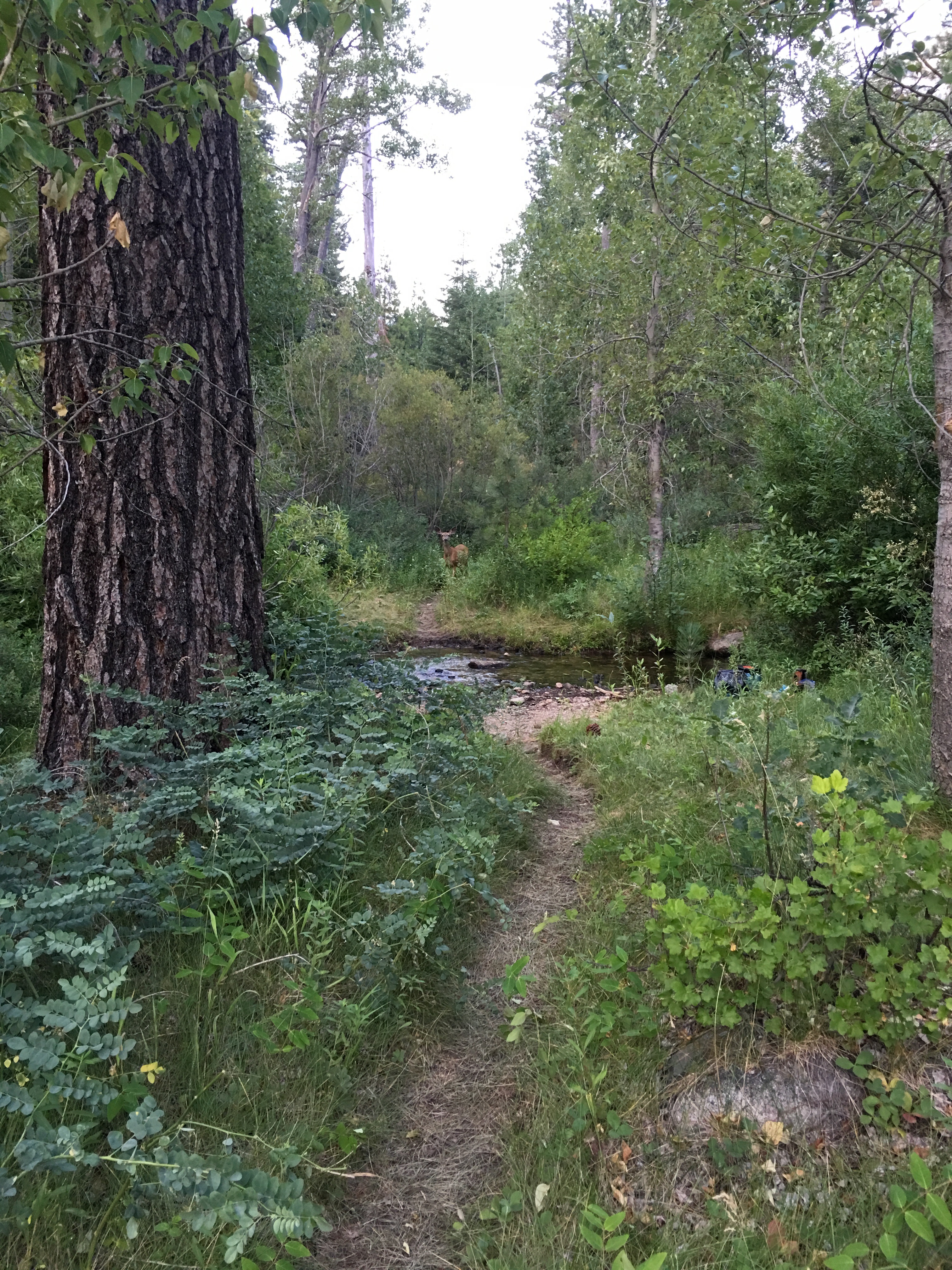
It was starting to occur to me that maybe this trip wasn’t supposed to be about miles per day. Maybe I was supposed to figure out how to have a good trip, a trip that would leave me wanting to do this again. I had joked with a friend back home “sometimes I do these extreme things and then I never want to do them again” – like running the half marathon, doing a triathlon, or cycling a century. I never wanted to do any of those again after doing them once (though currently the idea of a triathlon has been circulating and I’m tempted). She said “don’t do it then!” very concerned, I guess, that I would never want to backpack again. In the 13.5 hours of hiking 13+ miles that day, I had started to wonder if I should consider shortening my route so that I would be able to enjoy it more.
That night I put in earplugs to sleep because I was finding that the sound of running water and random bird noises was not calming or sleep-inducing. They helped me sleep deeper but I woke up a few times in the night, yanking them out, feeling like someone was speaking to me. At least I didn’t dream about fighting with my ex again, or dying.
Day 3
I never got their names, and I never saw them again after this day, but boy am I grateful for the existence of the Utah couple – practically my only points of human contact on those first 3 days. I got up at 5:30am (which was now the norm) and was packed and boiling water for breakfast at the creek by 6. The man came to the river to get water for his breakfast & prepare for that day’s travels so we had a chance to talk a bit more – both of us now rested, hydrated, and able to form complete sentences. I confessed to him that I was scared, this was my first big trip, and I might have scheduled a more intensive itinerary than I could do. He shared with me that he had done the JMT, that he hiked 500-600 miles on average per year, that he and his wife had just completed the PCT over the course of 39 years of doing segments, but how even for them yesterday had been a supremely challenging day. This helped me immensely. I needed to know that I wasn’t weak for finding the last two days so hard. Our conversation turned to what their plan was – 75 miles in 7 days, turning back towards Road’s End at Woods Creek Trail. When I suggested that I was torn between turning back or going forward he spoke of some people he ran into yesterday who did turn back and how he felt that going forward was actually the less difficult option.
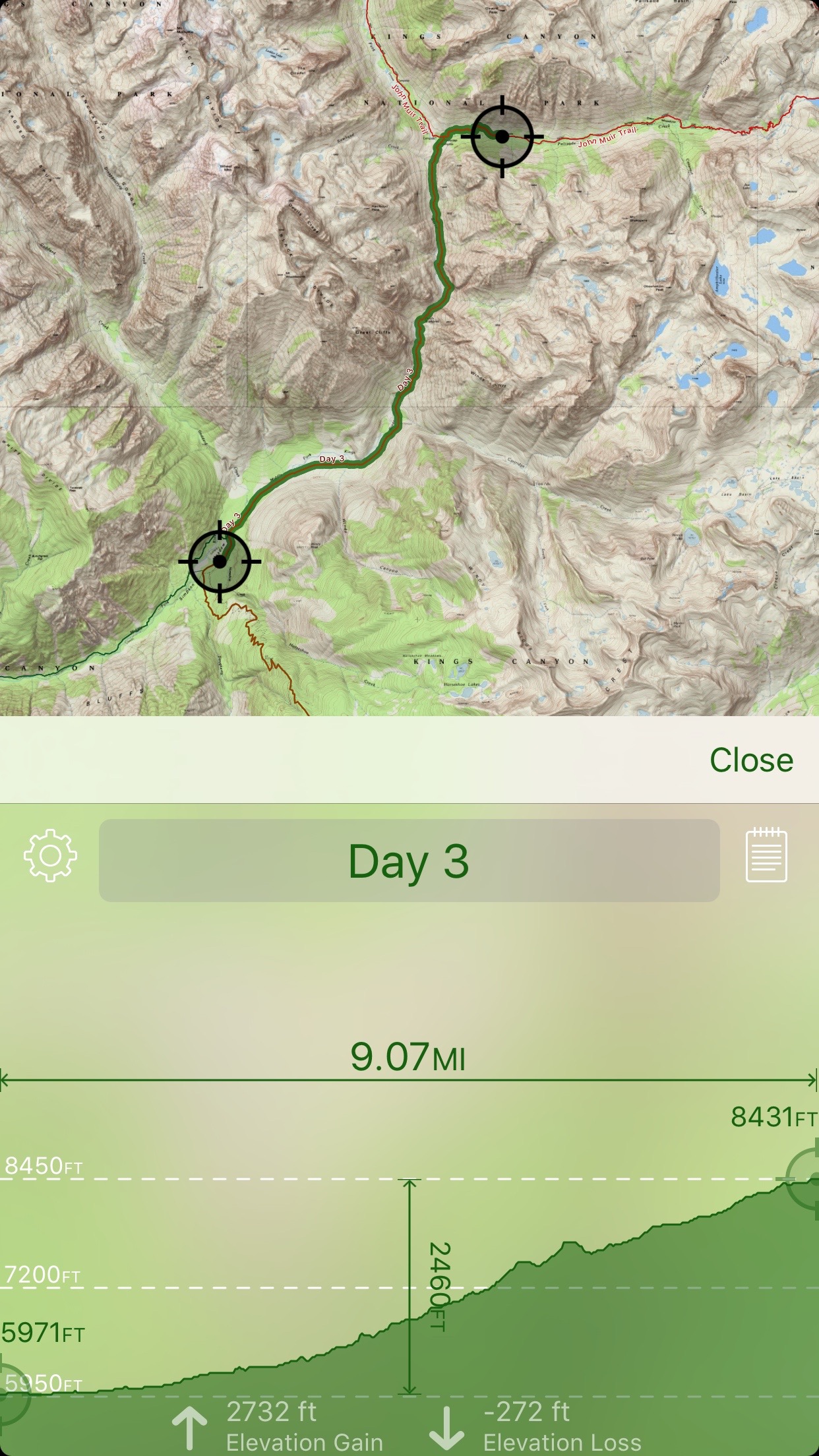
I’d still been turning over the idea of retracing my route back to the car, it would mean another day of going up 5600′ – this time with no water – and then at least another day of going down…though I could maybe stretch it into two smaller days. It felt so defeating to think of going backwards though. The Utah couple’s itinerary sounded good to me and so that morning I decided that I was going to do it too, and that decision enabled me to move forward with curiousity about what lay ahead and removed my dread at the thought of having to go back.
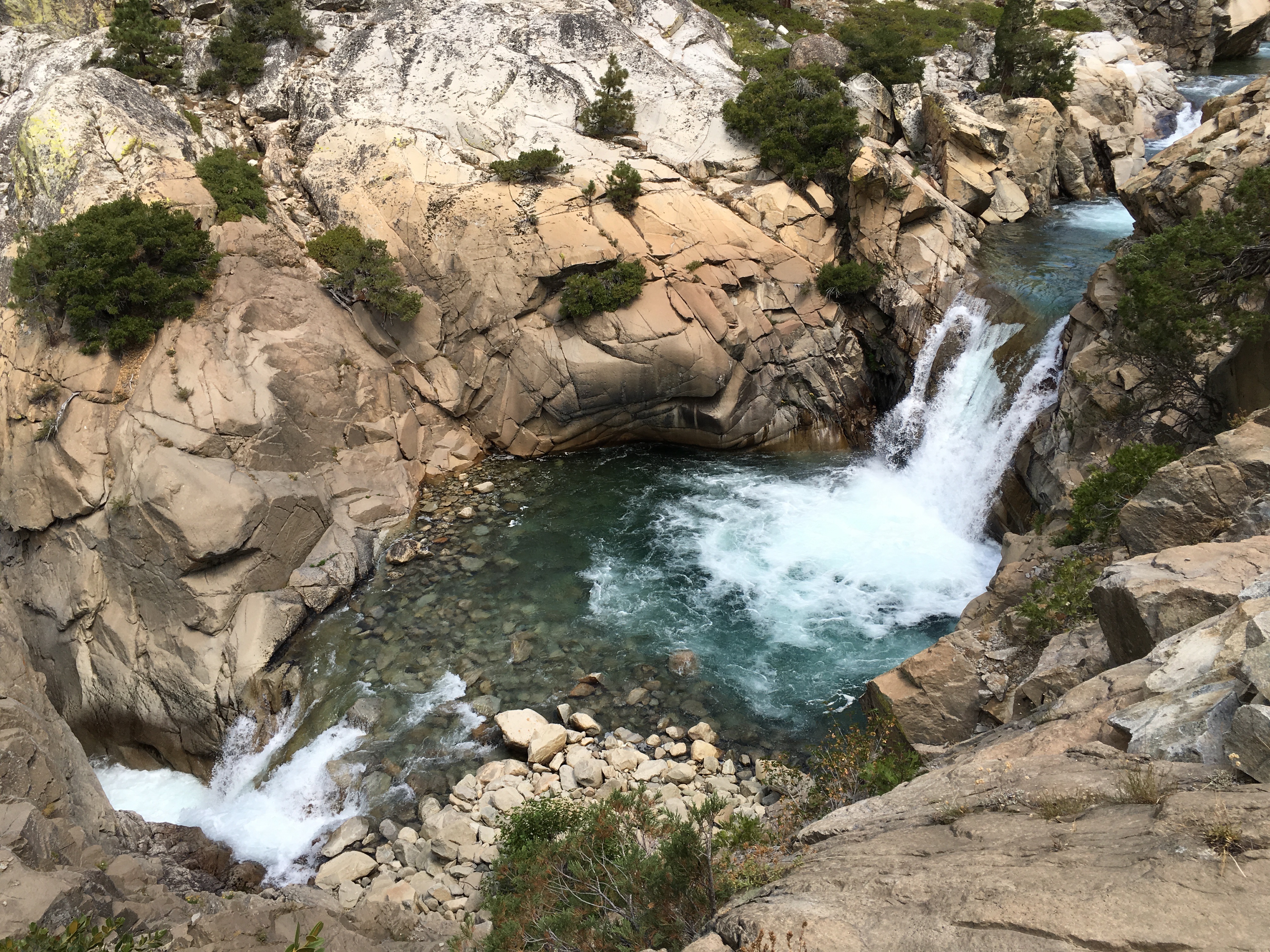
Once I got moving and changing scenery, a lot shifted. I wrote in my journal that night “I didn’t think about suicide today” and that felt like a huge accomplishment. On this day I passed the Utah couple on their first break in the morning and then never saw them again. I made good time towards my next goal (I was still on track for the third day of my original itinerary and was in fact going to go further than planned). I started to take electrolytes at each of my timer-alerted 2 hours breaks, was able to down snacks, and my body was beginning to acclimate to a full day of hiking. I felt more energized and able to take on anything, even more elevation. The slow-going uphill treks were just taking the time they took and I didn’t dissolve into a puddle of self-doubt anymore. I started noticing a feeling of being grateful for how strong my heart & lungs are and that my legs and feet were doing a good job of tackling the various trail compositions. From chunky granite rocks to stone stairs to packed dirt to gravel. My toes were a little numb but otherwise everything was functioning pretty well and while I would have little moments of noticing new ways that injury or death could occur in this environment, nothing overtook my thinking as in the previous days.
I intersected with the John Muir Trail at around 4pm that day and I’ll admit I had a moment of fan excitement.
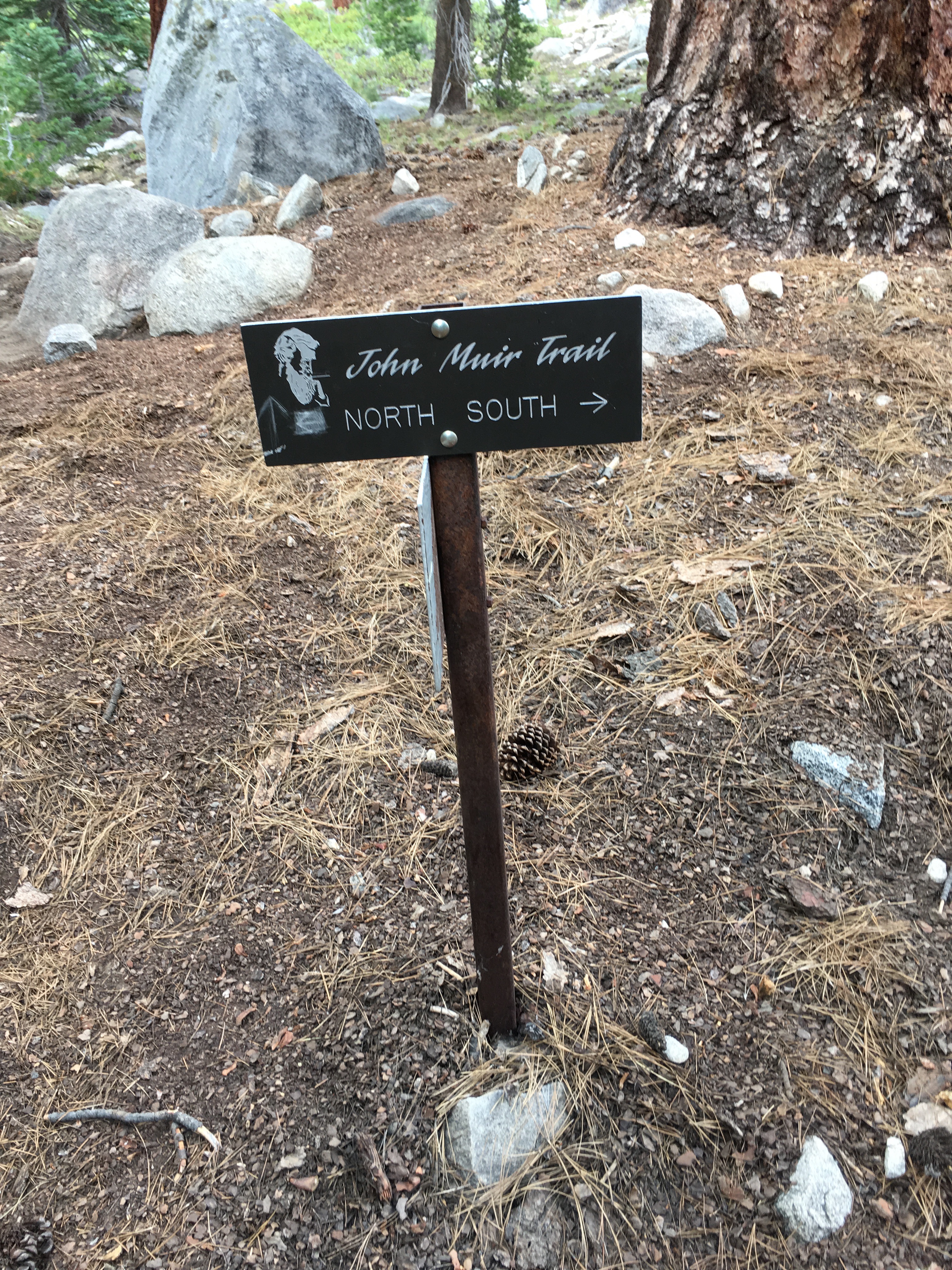
My other human encounter on that day was a young woman who was doing the JMT Northbound solo (for the time being). She said she’d just finished grad school and this was her ‘treat’ to herself but she had to laugh at calling it a treat. I was inspired to hear again that this type of experience was challenging other people, not just me, and I happily pressed on beyond my expected day’s goal (8.5 miles to the junction). Now that I was planning to do the 7 day loop, i needed to hit at least 10 miles that day, but I knew I could and it was still early. I had started at 7am that morning and by 5:30pm I had set up camp beside the river. That night, for the first time, I enjoyed the hot dinner (beef stroganoff) and tucked myself into bed feeling excited for my first full day of hiking on the John Muir Trail.
Stay tuned for one more post that will cover the two days on the JMT and the day getting off the trails.

